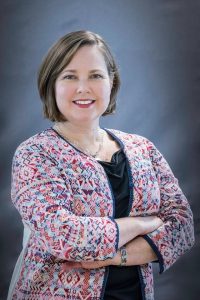I’ve been diagnosed with pulmonary fibrosis… Now what?

For anyone newly diagnosed with pulmonary fibrosis or their family member, Dr. Charlene Fell’s webinar is an informative and easy-to-understand starting point for self-education about the disease, what to expect and how to manage life with PF.
Dr. Fell’s presentation was delivered live twice during the Canadian Pulmonary Fibrosis Foundation’s (CPFF) series of educational forums during Pulmonary Fibrosis Awareness Month in September. If you missed it, please visit www.cpff.ca next month, when it will be available for review at any time.
The following are just some of the highlights of her session.
She explained that there are more than 200 kinds of ILD, or pulmonary fibrosis, grouped into categories based on the underlying cause:
- Occupational: from exposure in the workplace such as asbestosis, coal miner’s lung, farmer’s lung, etc.
- Autoimmune diseases, which can impact the lungs such as rheumatoid arthritis, scleroderma, etc.
- Drugs/radiation: ILD caused by certain medications, such as bleomycin, amiodarone, nitrofurantoin or radiation treatments.
- Idiopathic: ILD from unknown causes such as idiopathic pulmonary fibrosis (IPF).
She likened the classification of ILDs to dogs; while they have many things in common, such as all being mammals with four legs and a tail; there are many variations, or breeds, within the world of dogs with different characteristics like size and coat. Likewise, different kinds of pulmonary fibrosis have similar symptoms such as shortness of breath and cough, but may look very different on a CT scan of the chest.
Dr. Fell told her listeners it is important to make note of the specific type of ILD you have. “If nothing else, be sure to write down the exact type of ILD you have,” she says. “Have your doctor write it down for you. You will need to know this going forward in learning about your disease, your treatments and what to expect.”
After describing ILD, and how it affects lung function, Dr. Fell talked about what you can expect living with ILD. Although the different kinds of pulmonary fibrosis behave differently, there are some common features of PF:
- Pulmonary fibrosis is a chronic disease. There is no cure.
- You may experience an emotional rollercoaster; feeling angry, stressed, depressed and alone.
- You may experience cough, shortness of breath, fatigue, etc.
- Your symptoms will likely worsen over time.
- It may be hard to discuss your pulmonary fibrosis with family and friends.
- It may become more difficult to do things. You may have to stop working. You may need oxygen to help you breathe. You may need help at home, at first with more physical things like snow removal and gardening and eventually with personal care.
Dr. Fell also mentioned that everyone’s PF journey is different, with some progressing very slowly over a long time period and others declining rapidly. Acute exacerbations, or flare ups, of your lung disease can cause a rapid decline and while you may recover, you will not likely regain lung function to where it was before the exacerbation. Things such as viruses, blood clots or a heart attack can lead to flare ups of pulmonary fibrosis.
She then went on to offer seven broad steps on how to manage your pulmonary fibrosis to enjoy your best quality of life for the longest time.
- Learn as much as you can about your PF. Know your specific diagnosis, i.e. Which type of PF you have. Understand how your disease will change over time and what to expect. Be sure your information is reliable and up-to-date. Suggested websites to visit, include: cpff.ca, www.lung.ca, www.nhlbi.gov, www.mayoclinic.org.
- Build your team. You cannot do this alone. Engage family and friends for support and have someone come with you to medical appointments to take notes. Let others help you with activities. You’ll rely on several health professionals on your PF journey. Your family doctor will be your “quarterback.” Your respirologist will be your lung specialist. You may also work with others, such as a respiratory therapist, nurses, physiotherapists, a rehab therapist, a dietician, and others.
- Commit to healthy choices. Stop smoking, exercise regularly, get vaccinations for influenza, pneumonia and shingles. Maintain a healthy weight and eat a balanced diet.
- Manage your medications. Make note of the name, dose, purpose, timing and side effects of each of your medications. Use a dosette (a dispenser for pills with days of the week and/or times of day labelled on each compartment), or have your pharmacist package your medications in labelled blister packs for you.
- Reach out. You are not alone. Join a support group. Visit cpff.ca for local listings. Join an online forum. It helps to talk to others who have been through what you are facing.
- Be aware of depression, anxiety and stress. While these are normal reactions to chronic illness, they can keep you from seeing your doctor when needed, taking medication, or maintaining healthy habits. Talk to your family doctor about help in dealing with these issues.
- Plan for the future. Go through the process of advanced care planning. There are plenty of resources online to help you define your goals for the future from pursuing your dreams, to estate planning and end-of-life care. There are many options to consider. Making plans while you are still well, can be a final gift to your family and ensures your wishes are known and respected by them and your medical team.
About Dr. Fell
Dr. Fell is the founding chair of the Canadian Thoracic Society’s Clinical Assembly on Interstitial Lung Diseases and the Director of the University of Calgary Interstitial Lung Disease Program and has dedicated her research efforts to unraveling the mystery of IPF and making a difference in the lives of patients and their caregivers living with the disease.
Learning about connective tissue disease and ILD

Renowned rheumatologist Dr. Janet Pope of London, Ontario, shared her insights into connective tissue disease (CTD) and interstitial lung disease (ILD) during one of Canadian Pulmonary Fibrosis Foundation’s (CPFF) 17 educational forums steamed live during Pulmonary Fibrosis Awareness Month in September. You can watch her full presentation, when and where you wish, when it is available next month on the CPFF website.
Until then, the following are some of the highlights of her educational session.
“Shared care is the best care for people with connective tissue disease with significant lung involvement,” says Dr. Pope in her session. She encourages ongoing communication between a patient’s family doctor, rheumatologist and respirologist. “They need to speak to one another to give people facing both conditions the best possible quality of life.”
One of the known causes of ILD or pulmonary fibrosis are connective tissue diseases, such as scleroderma (also called systemic sclerosis or SSc) and rheumatoid arthritis (RA), which can affect the lungs. These conditions and others, also known as autoimmune diseases, account for about one third of all patients referred to ILD clinics. Most of these patients have scleroderma (14%) or rheumatoid arthritis (8%) and comprise many referrals to ILD clinics.
SSc is more common among women, who make up 80 per cent of people living with the disease, and is also more prevalent in individuals over age 50. About 30% of people living with SSc have ILD or pulmonary fibrosis and 15 per cent have ILD that impacts their quality of life.
Risk factors for ILD in people living with SSc include:
- Those 51-60 years of age have a higher prevalence of ILD with one in six having the disease.
- Presence of the antibody SCL70
- A recent diagnosis
- Evidence of ILD on a high-resolution CT scan (HRCT)
- Forced Vital Capacity (FVC) less than 70% of normal
According to Dr. Pope, ILD and SSc can be a lethal combination, with 15 per cent of SSc patients dying of ILD. Also 15 per cent die of pulmonary hypertension, with another 15 per cent dying of kidney failure or heart or gastrointestinal complications. About one in three SSc patients die within 10 years. “But, there is hope,” says Dr. Pope, “and with new medications and greater knowledge, these figures should keep improving.”
Unlike SSc, where patients often experience ILD symptoms within the first five years, ILD usually occurs late in those with rheumatoid arthritis. “It usually appears in subtle ways over time,” says Dr. Pope. It is also less than half as common in people with RA, as in those with SSc.
The recent approval by Health Canada of nintedanib (Ofev) for the treatment of non-IPF progressive pulmonary fibrosis offers a treatment that significantly slows the progression of ILD. Although access, or coverage under provincial formularies, is not yet available, submissions have been made by CPFF and physicians to government agencies to gain coverage for this proven medication.
In closing, Dr. Pope said that ILD in RA and CTDs is something that needs greater recognition by the medical community and by patients. She also believes that joint care between rheumatologists and respirologists is likely to deliver the most optimal care for rheumatology patients with significant ILD. Treatments include improving lung function with immune suppressing medications and slowing the rate of progression with anti-fibrotic drugs such as nintedanib.
During the question and answer portion of her presentation, Dr. Pope stressed the importance of telling your doctor if you experience shortness of breath or a persistent cough. “Your best advocate is yourself,” she said. “Ask your doctor or rheumatologist for a referral to check your lung function.”
She also emphasized the importance of exercise. In addition to exercise resources you can find on cpff.ca, she recommended the “Learn More Breathe Better Program.”
About Dr. Pope
Dr. Janet Pope is a professor of medicine and head of the division of rheumatology at the University of Western Ontario (UWO), Schulich School of Medicine, London, Ontario. She has published over 500 peer-reviewed articles and mentored more than 125 trainees. Her research expertise includes scleroderma, SLE and RA. She has been inducted into the Canadian Academy of Health Sciences.
You made Hope Breathes Here a big success!

Despite the restrictions of the pandemic, this year’s virtual Pulmonary Fibrosis Awareness Month campaign in September raised more than $69,000 (as of September 30) and drew thousands to our education forums, Virtual Bubbles event and the Clarke Walk for Pulmonary Fibrosis.
Thanks to all of you, participation and connections were made across the country. More than 500 of you shared tributes and stories and almost 1,100 photos. You walked 16, 107 km, well beyond a return journey across the country (which is 6,818 km one way) in the Clarke Walk for Pulmonary Fibrosis.
Advertising and media coverage meant we achieved more than 11.4 million media impressions, increasing awareness well beyond our community. You can read and watch some of this coverage on the Canadian Pulmonary Fibrosis Foundation (CPFF) website as we collect and post it in the coming weeks.
The Hope Breathes Here Wrap up and Applause event, broadcast online on Saturday, October 3, was touching and inspirational. If you missed it, you can watch it in November when we will post it for viewing anytime. You’ll find the link in the next issue of this newsletter.
The Applause event began with a wonderful rendition of “O Canada” by Emma Yee of Edmonton, Alberta. Touching tributes of those now living with the disease and those who have passed, conveyed stories of strength and resilience despite the challenges of this terrible disease. You can still add your story, or tribute to a loved one, by visiting www.hopebreatheshere.com. Go to the Stories section and click on the Share your Story button.
Matthew Davidson told us by remote video how proud his father Robert Davidson, the Founder of CPFF, who passed away in May 2019, would be of our progress. “He would be so pleased that we have continued his legacy to help others survive and thrive,” he said.
A slide show of people (and dogs) walking in parks, on mountainsides and along sidewalks were featured in a medley of photos submitted by those who took part in the Clarke Walk for Pulmonary Fibrosis. Participants raised more than half of the donations during September’s Awareness Campaign.
You can still visit www.hopebreatheshere.com where you can find greetings and proclamations from a number of elected officials from across the country, as well as photos of various landmarks, which were lit in red and blue during September in recognition of Pulmonary Fibrosis Awareness Month.
CPFF was pleased to offer a number of prizes in various categories to encourage your involvement throughout the . The following are a list of prizes and winners:
First person to post kilometres – John Dennis
Last person to post kilometres – Dean Craig
Person that pushed us past the 6,818 km mark (distance across Canada) – Stephanie Davies
Top three on leaderboard (collecting most points by answering questions and completing activities) – Judy Aikenhead, Sandra Gillies and John Coke
Top individual fundraiser – Jacqui Bowick-Sandor
Best blowing bubbles photo – Jackie Lutz
Best photo – Rob Garbutt
Person most active on Hope Breathes Here Event Portal – Michael Trottman
Provincial Winners
BC – Patricia Stuart
Alberta – Paul Gianneilia
Saskatchewan – Sadaf Moseni
Manitoba – Pauline Korol
Ontario – Jeannie Tom
Quebec – Piraveena Sivabalan
Nova Scotia – Pat Popowell
Newfoundland & Labrador – Marcella Lewis
PEI – Myrna Phillips
Congratulations to all of our winners. Please send an email to [email protected], using “Prize Winner” as the subject line. She will need your mailing address, so she can send you your prize later this month.
CPFF is grateful to its sponsors, who provided support to develop the tools to bring you this year’s virtual Pulmonary Fibrosis Awareness Month events and activities. They are: Boehringer Ingelheim, Hoffmann-LaRoche Ltd., Repeat Dx, Respiratory Homecare Solutions, snapd, Telford Land & Valuation Inc. and Telus.
 While many of us will celebrate Thanksgiving this weekend with fewer friends and family than usual due to the pandemic, we still have many reasons to give thanks.
While many of us will celebrate Thanksgiving this weekend with fewer friends and family than usual due to the pandemic, we still have many reasons to give thanks.
I want to express my gratitude to the hundreds of you who adapted and participated in our events and activities last month, making our virtual Pulmonary Fibrosis Awareness Month a wonderful success by raising both funds and awareness of PF across the country.
We all appreciate the more than 20 expert presenters who volunteered to share their expertise and answer your questions during 17 live, online, education forums. In case you missed them, we’ll be posting them all on our www.cpff.ca website in November, so you can watch them again, or for the first time, whenever you like.
I want to thank everyone who helped us walk across the country and back, and then some, to raise funds during the Clarke Walk for Pulmonary Fibrosis, which was a national event for the first time.
I’m grateful to have a team of incredibly dedicated people — all volunteers – who don’t think twice about sacrificing their evenings and weekends during a crisis to ensure our pulmonary fibrosis community members are connected and informed.
I’d like to thank those who shared touching tributes to your loved ones, as well as those who shared their personal stories with the media and through social media. You can read these in the Stories section at www.hopebreatheshere.com.
Many of our elected officials sent us messages of encouragement and support and our funded researchers shared their gratitude for CPFF’s support for their work. You can find them all on www.hopebreatheshere.com.
I am grateful to our corporate supporters who made it possible for us to develop these new ways of reaching out to our community, health care professionals, elected officials, the media and the public.
I’d also like to thank everyone who made a donation to the Canadian Pulmonary Fibrosis Foundation to enable us to serve and support our community and invest in research into new treatments and ultimately a cure. CPFF receives no government funding, so every dollar donated goes to vital programs and services. You can still make a donation to our Awareness Month campaign until October 9.
I’m grateful to live in a country like Canada that responds generously in times of crisis. And I’m grateful for the trust the PF community has in CPFF to be there with resources and tools to meet whatever challenges come your way.
A crisis like this pandemic teaches us the value of community and of supporting each other and holding each other in our lives. I know that we will all emerge stronger, because look at what we’ve created together.
Lastly, I want to wish you all a safe and happy Thanksgiving. May you also have many blessings for which you can give thanks.
Sharon Lee, Executive Director, CPFF


